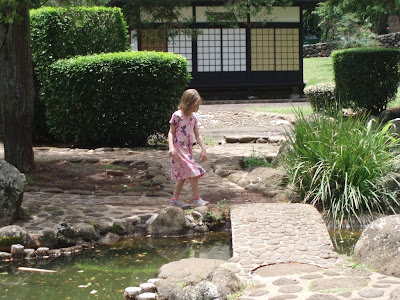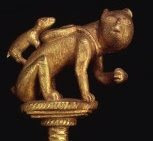
We went to the Detroit Institute of Arts today, with a goal of seeing more African art. The museum has a wonderful African collection, which is organized by themes such as masquerades, coming-of-age ceremonies, birth, marriage, death, and religion. I've been trying to learn the artistic viewpoint of the individual tribes.
The Baule people of the Ivory Coast seem to me to have a coherent vision in their art -- at least, what I've been able to see. The mask on the left is said to be used in ceremonies to represent the female ideal of beauty. (Documentation at the DIA is infuriatingly vague and childish, so that's all I got from the label.)

The dark-colored statue is a baboon figure. "When harassed by a bush or forest spirit, a person asks a diviner to commission a baboon sculpture like this one," says the label. "The figure becomes a temporary home for the spirit. The flexed knees represent the spirit's constant plea for offerings and ritual attention. If satisfied, the spirit could bring wealth and prosperity to the owner."

The next two items are a sword hilt and a gold-leaf fly whisk handle, also Baule.















































